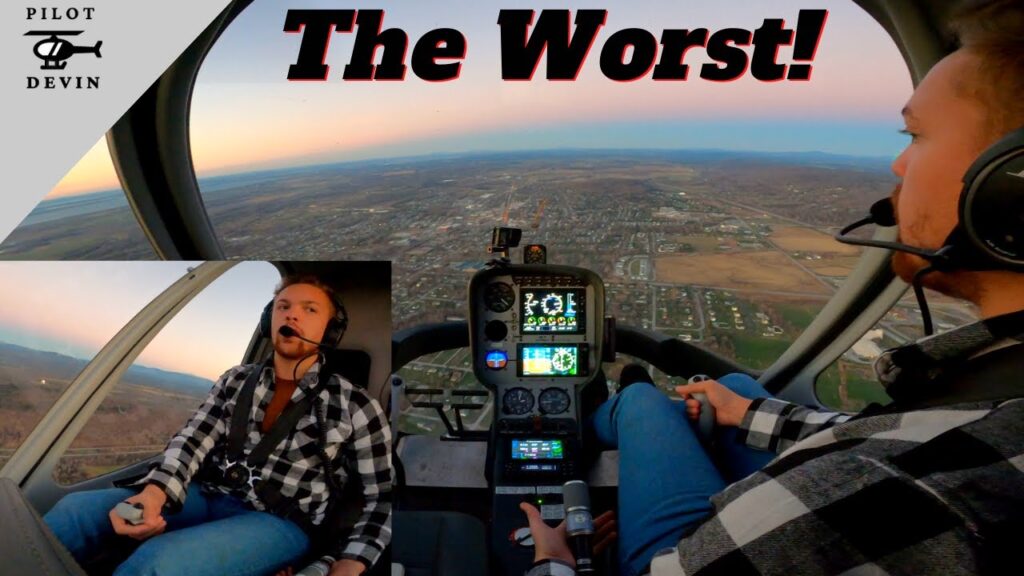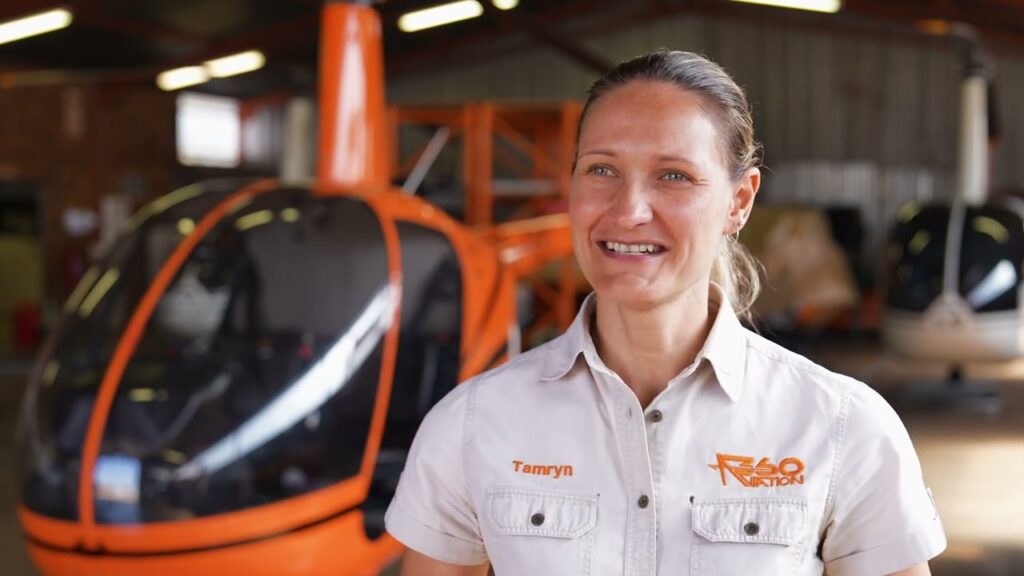Introduction to Helicopter Flight Training Materials
Welcome to the world of rotary-wing aviation! If you are considering a career as a helicopter pilot or simply aiming to fulfill a life-long dream to take the controls of these versatile aircraft, understanding the variety of training materials available is essential. From comprehensive textbooks to state-of-the-art flight simulators, each resource is designed to help you grasp the complexities of helicopter flight.
Beginning with the theoretical knowledge, ground school training manuals cover a range of topics including aerodynamics, helicopter systems, weather, navigation, and flight regulations. These materials often come enriched with detailed diagrams and illustrations to aid in the visualization of concepts that can seem abstract at first. It’s crucial to build a strong theoretical foundation before proceeding to more practical aspects of helicopter flying.
Moving onto the practical side, many training programs provide access to advanced flight simulation programs. These simulators allow students to experience the feel of flying and practice emergency procedures in a safe and controlled environment. Although simulators can’t replicate every aspect of actual flight, they are invaluable tools for honing skills and building confidence before taking to the skies.
Lastly, actual flight training aids, such as cockpit procedure trainers, give students the opportunity to familiarize themselves with the layout and operation of helicopter controls and instruments. These aids are pivotal in bridging the gap between theoretical studies and real-world piloting. With hands-on practice, students internalize the pre-flight checks and in-flight operations critical to safe helicopter operation.
Exploring Helicopter Flight Training Applications
The aspiration to command the skies by piloting a helicopter is both thrilling and exacting. In Mexico, the rich topography and diverse climates provide a unique setting for helicopter flight training. This specialized form of aviation education employs various applications to ensure that future pilots are well-equipped for the challenges of rotary-wing flight. The complexity of helicopter controls and the physics of vertical flight require intensive, hands-on training modules that are designed to build competence and confidence.
One significant application in helicopter flight training is the use of state-of-the-art flight simulators. These advanced systems mimic the cockpit and controls of different helicopter models, allowing trainees to experience a plethora of flight scenarios. Students are exposed to emergency procedures, instrument navigation, and weather variation—vital skills for flying in Mexico’s diverse conditions. Simulators provide invaluable practice hours without the risks and costs associated with actual airborne training.
Another key component in Mexico’s helicopter flight training landscape is the focus on mountain flying applications. With ranges such as the Sierra Madre Occidental and the Sierra Madre Oriental, pilots must be adept at navigating complex terrain and thinning air density at higher altitudes. Training programs often include specific courses tailored to these environments, where students learn to manage power settings and rotor efficiency to deal with the demanding mountainous regions.
Finally, the application of search and rescue (SAR) operations training reflects the increasing role helicopters play in emergency response efforts across Mexico. Courses in SAR impart skills needed for critical missions, such as precise navigation, hoist operations, and patient evacuation procedures. The combination of theoretical classes and practical exercises ensures that pilots are ready to contribute effectively to life-saving operations in a country that values rapid and capable response units.
Downloadable PDFs for Helicopter Flight Training
Embarking on the journey to become a helicopter pilot in Mexico is an exciting venture. With the picturesque scenery and diverse landscapes, the country offers an ideal backdrop for flight training. To assist budding aviators in their educational endeavors, a variety of downloadable PDFs are available that can supplement the learning process. These resources cover a range of topics essential for a comprehensive understanding of helicopter mechanics and flight operations.
One of the fundamental resources available is the Helicopter Flight Training Manual, which is an invaluable guide for beginners. It explains the basics of helicopter aerodynamics, controls, and instrumentation, as well as provides insights into the decision-making processes crucial for a pilot. By studying this manual, students can gain a solid theoretical foundation before they even step into the cockpit.
For those looking to deepen their knowledge, there are advanced guides that discuss complex maneuvers and emergency procedures. These PDFs often include detailed illustrations and step-by-step guides to ensure that pilots are well-prepared for any situation they might encounter. The materials are designed to be used in conjunction with actual flight training and can significantly enhance the learning experience.
Beyond the technical aspects, safety PDFs address the critical topic of flight safety and risk management. Emphasizing the importance of pre-flight planning, these documents provide checklists and best practices that are essential for maintaining the highest safety standards. As safety is paramount in aviation, these PDFs are a must-read for all helicopter flight students, ensuring they are well-versed in the protocols that keep both pilots and passengers safe.
Enhancing Skills with Helicopter Flight Simulators
In the rapidly advancing realm of aviation, helicopter flight simulators have emerged as essential tools for pilots looking to refine their flying techniques and emergency response protocols without leaving the ground. These sophisticated systems offer a risk-free environment to practice maneuvers, understand aircraft systems, and respond to diverse flight scenarios that mirror the complexity of real-world operations.
One of the primary benefits of helicopter flight simulators is the ability to replicate a wide range of weather conditions. Pilots operating in Mexico’s varied landscapes—from the dense jungles to arid deserts—must be adept at handling sudden climatic shifts. Simulators provide the luxury of experiencing these changes in controlled settings, enabling pilots to develop the competence needed to navigate unpredictable weather safely.
Modern flight simulators are also instrumental in teaching new technology integration. With the aviation industry’s continuous evolution, simulators are updated to include the latest navigational and flight management systems. By training in a virtual environment, pilots can stay ahead of the curve, mastering state-of-the-art avionics without the pressure of real-time flying.
Emergency procedure training is another area where simulators prove invaluable. Helicopter operations can be high-stakes, especially in emergency services or in rugged terrains. Flight simulators allow pilots to rehearse their response to scenarios such as engine failures, electrical malfunctions, or hydraulic system breakdowns. This kind of preparation is crucial to ensure that when faced with such challenges in the air, pilots’ reactions are well-practiced and second nature.
Lastly, simulators help in resource management and decision-making skills. The immersive environment of a simulator can mimic the workload and stress experienced during actual flights, thus helping pilots to sharpen their judgment and operational management skills. Not only do they learn to make critical decisions on the fly, but they also gain expertise in managing the helicopter’s resources efficiently during both routine flights and crisis situations.
Finding the Right Helicopter Flight School in Mexico
When you decide to pursue a career as a helicopter pilot or simply want to experience the thrill of flying a helicopter, finding the right flight school is crucial for your success and safety. Mexico boasts a variety of helicopter flight schools that cater to different needs, from those seeking professional pilot careers to hobbyists longing for the sky. While the choice of a school should be tailored to your personal goals, budget, and location preferences, there are several key factors to consider when making this important decision.
Accreditation and Certifications – The first step in choosing a helicopter flight school in Mexico is to ensure that the institution is fully accredited by the relevant aviation authorities, such as the Dirección General de Aeronáutica Civil (DGAC). Accredited schools adhere to strict safety standards and provide a curriculum that is recognized within the industry, which will be valuable when seeking employment or further certifications. Additionally, check whether the school’s instructors are certified and have a significant amount of flight hours, as their expertise will greatly impact your learning experience.
Fleet and Facilities – A good helicopter flight school should have a well-maintained fleet of helicopters that are representative of what is commonly used in the industry. While training on advanced and varied aircraft can be a bonus, the primary concern should be the safety and reliability of the fleet. Visit the school if possible, and take a look at their facilities. Classrooms, maintenance areas, and the availability of simulators can indicate the quality of education you will receive. State-of-the-art equipment and resources can enhance your training, but the most critical aspect remains the condition of the aircraft you will fly.
Training Programs and Course Structure – Each helicopter flight school in Mexico may offer different training modules and courses. Some might specialize in private pilot licenses (PPL), while others may offer more comprehensive programs that lead to a commercial pilot license (CPL). Consider if the school provides theoretical and practical lessons that cover all aspects of helicopter flying, including navigation, meteorology, and flight planning. The course structure should be well organized and should progressively build your skills and confidence in the cockpit. Look for a program that suits your learning pace and gives you ample time in the air.



